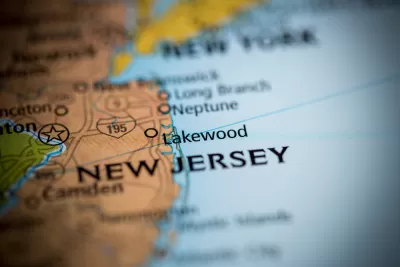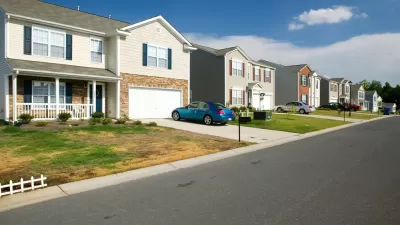Homes in suburban and even rural locations were hot commodities on the pandemic real estate market, according to an industry report.

Marian McPherson shares news of a new report by realtor.com that quantifies the tumultuous year on the real estate market, focusing especially on the locations where prices spiked the most during the pandemic.
"According to realtor.com’s latest market analysis released on Tuesday, the explosion in price growth is happening in suburbs across the country, including little-known metros such as Wayzata, Minnesota, and Brandon, Mississippi," writes McPherson to summarize the report's finding.
"Lakewood, New Jersey topped the list with median home prices increasing a whopping 47.6 percent to $309,000 from October 2019 to October 2020," adds McPherson. Next was Lake Arrowhead, California, were prices increased 45.7 percent. In Lake Arrowhead, the increased prices haven't stopped buys from taking the plunge. The area saw a 47.7 percent sales increase during the same time period.
The location with the third largest increase, according to realtor.com is Gross Pointe, Michigan.
McPherson notes that most of the locations with huge price spikes this year are still relatively cheap—the media price in the majority of locations on the list comes in under $500,000 after the increases.
FULL STORY: Here's where home prices soared the most during the pandemic

Maui's Vacation Rental Debate Turns Ugly
Verbal attacks, misinformation campaigns and fistfights plague a high-stakes debate to convert thousands of vacation rentals into long-term housing.

Planetizen Federal Action Tracker
A weekly monitor of how Trump’s orders and actions are impacting planners and planning in America.

In Urban Planning, AI Prompting Could be the New Design Thinking
Creativity has long been key to great urban design. What if we see AI as our new creative partner?

Florida Seniors Face Rising Homelessness Risk
High housing costs are pushing more seniors, many of them on a fixed income, into homelessness.

Massachusetts Budget Helps Close MBTA Budget Gap
The budget signed by Gov. Maura Healey includes $470 million in MBTA funding for the next fiscal year.

Milwaukee Launches Vision Zero Plan
Seven years after the city signed its Complete Streets Policy, the city is doubling down on its efforts to eliminate traffic deaths.
Urban Design for Planners 1: Software Tools
This six-course series explores essential urban design concepts using open source software and equips planners with the tools they need to participate fully in the urban design process.
Planning for Universal Design
Learn the tools for implementing Universal Design in planning regulations.
Gallatin County Department of Planning & Community Development
Heyer Gruel & Associates PA
JM Goldson LLC
City of Camden Redevelopment Agency
City of Astoria
Transportation Research & Education Center (TREC) at Portland State University
Jefferson Parish Government
Camden Redevelopment Agency
City of Claremont





























